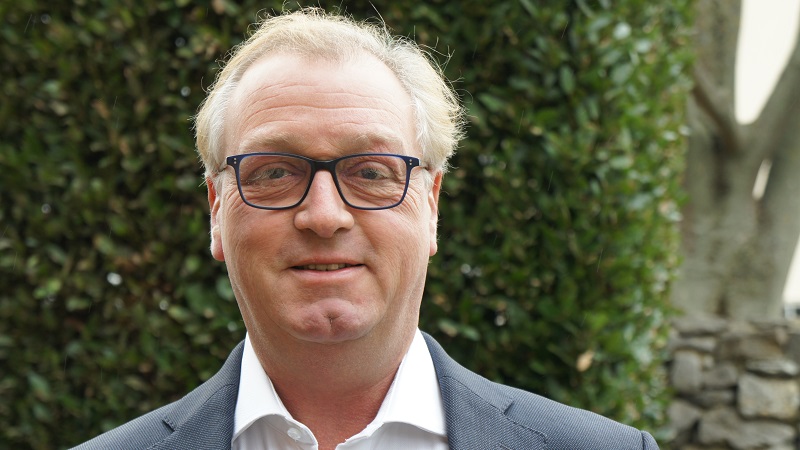Chris Redman has been involved in sustainable investment for the best part of 30 years, and so has tracked with interest its transition from a fringe nice-to-have offering for select clients, through to its modern day omnipresence, with everyone claiming to be an expert.
Redman joined Peregrine & Black Investment Management (PBIM) in December 2018, but has been researching and managing responsible investment portfolios since the 1990s, when he was an investment manager at Gerrard Investment Management. Gerrard later became part of Barclays Wealth.
During a stint at Collins Stewart Wealth Management between 2010 and 2012 he dabbled in an ethical model for advisers, but it wasn’t until subsequently joining Raymond James that his keen interest in responsible investment really blossomed. It was there he set up and managed an ESG investment service.
“That was back in 2012, so long before it was fashionable,” he says. Though it was only eight years ago, interest from advisers was minimal.
“I would phone up advisers and say, ‘This is what I’m doing’, and they would say, ‘Nice to talk to you, Chris, but actually no one has ever asked for it and I don’t think it makes money’, and that was the standard answer.”
Fast forward to today and Redman is head of responsible investment at PBIM, a role he was promoted to in October as part of the discretionary fund manager’s launch of an integrated service for external IFAs. The move also saw Graham Withers become head of discretionary wealth management.
The new service makes the firm’s four investment services – bespoke portfolios, risk-rated model portfolios, ESG portfolios and IHT service – accessible to external IFAs for the first time. As well as heading up the ESG service, Redman is also responsible for the IHT portfolios.
Transparency issues with responsible portfolios
Redman says it’s difficult to avoid ESG now that “everyone’s flying the flag”, which he puts down to the abundance of media reports focused on climate change. But does adviser interest match this press attention and the huge product push from asset managers?
“Yes and no,” he says. “Even now when I speak to advisers, they know they need to have something in their kit bag and it’s easy for an adviser to access model portfolios relatively cheaply, so the industry has got its head on in terms of providing something broad-brush and feel-good.
“But it is still very difficult for advisers to fully understand just how clean or responsible the underlying portfolio is, because you’ve got to be able to dig right down to the individual holdings and underlying funds.
“This is because a lot of the fund management houses are saying, ‘We integrate ESG’, but the extent to which they’re integrating ESG is not at all transparent.”
Redman recollects a meeting about a year ago with a large domestic investment manager to discuss its emerging markets portfolio. To his shock and surprise, the portfolio’s top 10 holdings included Brazilian miner Vale, which in January last year was responsible for a tailings dam that collapsed, leading to the deaths of 270 people in the village of Brumadinho.
“These managers who professed to be integrating ESG still held the stock in their top 10 holdings,” he says. “It was absolutely flabbergasting. ‘We didn’t think they’d do it twice’, they said.”
Redman questions whether certain managers who say they integrate ESG into their proposition are, in fact, willing to override this view if the financial opportunity becomes too high.
“Is ESG high on the priority list or something in the background? That’s what is very difficult for people to understand. You can only really work it out when you sit down with the manager and talk to them, having analysed what they are buying and selling.”
As well as collectives, PBIM uses direct equities within bespoke client portfolios, which Redman believes helps the team better comprehend the inside workings of companies and, in turn, sniff out potential controversial practices.
“Investors rarely have this direct link with the company, being able to understand what it has to do to change its processes to be more sustainable,” he says.
“A company might have thousands of products and hundreds of suppliers all operating within a fairly carefully balanced system all over the world, including countries that have relatively poor governance. It is important from an investment manager’s point of view to understand what companies have to go through to get to a better place.”
Dispelling the returns myth
Redman is keen to dispel the myth that investing responsibly comes at a cost to portfolio returns. He says PBIM is committed to the concept that as the owner of the assets, the client is free to invest their money as they see fit.
“People make choices all through their lives about what is right and wrong: the career path they choose, the way they bring up their kids, the schools they send their kids to … and all of a sudden when it gets to the financial world the mantra has been, ‘Oh you can’t do that because you’ll end up poor’, and that’s a big lie.
“One of the advantages of dealing with somebody like me, with 30-odd years’ experience, is we see it as an investment management job,” he says. “What we’re doing is not philanthropy. We’re trying to make sure people achieve their investment objectives, but do it in a way they are happy with.”
All PBIM portfolios are bespoke but Redman says he has been running sustainable models in the background since 2012, when he was with Raymond James. This is so he can show clients what, for example, a medium-risk portfolio looks like and how it would have performed in certain market conditions.
“One of the biggest challenges is people need to see that a responsible portfolio can perform well,” he says. “The reality is that the performance of these models – and there’s nothing fancy about them – has been exceptional.”
Cutting through the noise to educate advisers
Under Mifid II amendments it is expected to become mandatory for advisers to introduce ESG considerations into their suitability assessments. As such, educating advisers and clients is a large part of what Redman does at PBIM, in order to cut through the noise and confusion that surrounds ESG, ethical investing, responsible investing and so on.
“All these labels are being bounced around and the poor investor or adviser is understandably confused,” he says. “What we’re aiming to do is work with advisers to help them figure out what exactly their clients are after.
“Advisers are required to ask the client if they are interested in ESG and responsible investments, but if the adviser doesn’t properly understand the differences between them, how are they going to have that conversation?”
When it comes to fund selection, Redman names Robeco, Triodos, Pictet and Wheb as standout groups in the field.
“Our view is fairly classical in terms of analysing managers. Traditionally, we are looking at portfolio churn, returns, alpha, etc, but then applying another lens, which says, ‘OK, so what about these other issues, how do you deal with those?’
“Then it becomes clear quite quickly whether their ESG claims are fairly low down the priority list or whether they are very rigorous.”
Why active management is essential in ESG
For Redman, active management is essential for responsible investing. “If an ETF happened to fit the bill, I’d be happy to use it. But I tend to find when I look inside them they have too few exclusions, and even those exclusions have too much bandwidth,” he says. “They’re simply not tight enough at the moment. I’m sure in time they will bring out ETFs that are super-clean or super-responsible. It’s not difficult to do that.”
One of Redman’s main issues is with the thresholds some ETFs, and even some active funds, set for allowing certain unethical or unsustainable practices to be included in the portfolio.
He explains: “A manager might set their filter as ruling out a company if more than 10% of its revenues are derived from a certain activity.
“Selling adult magazines, for example, isn’t going to comprise 10% of a supermarket’s revenues, but in the context of child labour or forced labour, 10% is enormous. If 10% of your revenues are coming from child labour, you’re in a world of trouble.
“If you’re investing in a fund that says it cuts off at 10%, you could be buying some really awful companies.”
In terms of asset classes outside of equities, Redman sees a wider choice today in the fixed interest space than historically. As for alternatives, he says there are a lot of options in listed infrastructure but describes real estate as “a funny one”.
“Do you look into the final tenants or do you look at the quality of the buildings or the way the managers work? It’s a tricky one. But in any case, I think that the diversification benefits of real estate are under a bit of a cloud at the moment.”
Commodity conundrum
Commodities also proves a conundrum because its sustainable credentials from an environmental standpoint are nowhere near clear cut.
“You wouldn’t normally expect to see commodities anywhere in an ESG portfolio, but I think that will change because climate change revolution is going to require a lot of mining for the metals and minerals to produce batteries for electric vehicles and other things,” he says.
“There is a strong argument to say commodities have to be part of the picture; and perhaps mining, but it’s a very controversial area for sure.”
Ultimately, outsourcing investment is about trusting people and, for Redman, experience through market cycles is vital to understanding how assets react in different situations.
He feels this is particularly pertinent to ESG, which tends to draw a younger crowd compared with traditional asset markets such as bonds and equities.
“I feel much more comfortable with investment managers that have got some grey hair and who have been around the block a few times. They have been around long enough to see investments fail, because that’s how you learn,” he says.
“You don’t learn by picking winners; you learn from picking losers.”










